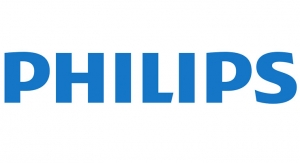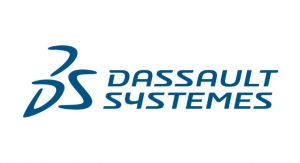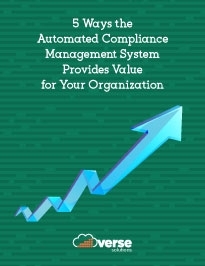Alexa Sussman, Content Marketing Writer, EtQ03.07.17
Corrective actions are an important part of managing the quality of a medical device production. In fact, our most recent survey showed 72 percent of quality professionals name corrective actions as the most critical quality and compliance process in their organization. As standards update, regulatory bodies are putting emphasis on having a set procedure for handling and documenting corrective actions. Through automation and other technological tools, life science organizations can set up a successful corrective action system.
Automating the Corrective Action Process
Gone are the days of Word documents and spreadsheets to track and manage corrective actions. However, some are hesitant to adopt new methods because they’re unsure of the role automation plays in a corrective action process. Automation can improve all aspects of the corrective action process, including:
Benefits of Automated Corrective Actions
The individual processes aren’t the only things that benefit from automation. There are some overarching benefits that span across operations on an organizational level.
1. Increasing Visibility and Traceability
Documenting the process from start to finish increases visibility and traceability. It provides a clear trail of actions, where each individual step and who contributed to it can be viewed. That way, key decision points for improvement and any gaps in training or processes can be determined.
The documentation also serves as a diagnostic tool. Being able to backtrack the data allows the opportunity to determine strengths and areas for improvement within a company’s operations. It’s most beneficial in an automated system because the centralization gives insight to the entire team. The corrective action system then becomes a hub for communication, collaboration, and systemic improvement.
2. Building Accountability Through Collaboration
Automated corrective actions open the lines of communication—most importantly, instant communication. Engraining collaboration into the team’s workflow is important in encouraging everyone to work together toward common quality goals, such as correcting quality issues. When that’s combined with an automated notification and reminder system, the team will work quickly and efficiently, since they won’t lose track of deadlines and are instantly notified when something is needed from them.
Since everyone is working within the same system rather than individual documents, team members are able to collaborate efficiently and know the correct point of contact for different aspects of the assignment. Since the project is visible to all members, there’s also an increased sense of accountability. There’s a set procedure everyone is expected to follow and adhere to within a workgroup, so members are less likely to neglect their portion of the assignments.
3. Reducing Risks
Many standards and regulations are shifting toward risk-based thinking, requiring organizations to build processes that aim to reduce risk. Resolving issues at their root cause is an excellent way to reduce risk in an organization, and an automated corrective action system supplies the tools to accomplish that. Issues can still be addressed and residual effects corrected with manual processes, but it will be more difficult to determine and resolve the underlying issue.
Successful corrective actions bring organizations closer to the ideal world of zero risk. Although there will always be other factors contributing to risk, reducing those within company control is essential to maintaining good organizational health. Automated corrective actions reduce risks by fixing the real issues, rather than masking them with quick fixes.
4. Improving Audit Readiness
All of the aforementioned benefits combine to groom an organization for audit readiness. Rather than scrambling to prepare for a last-minute audit or frantically trying to correct issues that audits uncover, companies can be confident that at any given moment, audits would yield positive results. Since issues are being fixed at the root cause the first time around, companies can ensure that the systems they have in place are compliant and won’t lead to future issues.
Being audit ready means processes are up to standards and operations are efficient. This may require a great deal of training and preparation, but using automated corrective actions helps make the transition smoother.
Best Practices for Life Science Corrective Actions
Corrective actions are most effective when certain best practices are applied. Although they do provide benefits on their own, taking full advantage of their capabilities brings the most positive impact to an organization. Pinpointing the specific ways corrective actions can be used within an organization is important—it will help to quickly achieve a state of audit readiness.
1. Automate
Not enough emphasis can be put on the importance of automation. Manual processes no longer have a place in corrective actions and quality management. They are messy, inefficient, and prone to human error.
For example, imagine launching a corrective action that ends in necessary employee training. With manual processes, all applicable employees would likely be emailed, informing them of the training. Then would come either trying to schedule a training session through email, or attaching a self-training document. Some possible downfalls of this method include:
2. Include Suppliers
It’s a decent start to have apt quality systems within a company’s four walls, but if an external party does not match the standards, all that work is for naught. To help eliminate that risk, include suppliers in the corrective action process. Extending automated corrective actions to suppliers through external assignments benefits an organization in the following ways:
3. Take Advantage of Root Cause Analysis
It’s better to assume a proactive role in quality management instead of reactively responding to individual quality events. Proactively handling corrective actions entails reaching the deepest level of what caused the issue, so the action plan can include preventive measures that close the wound, rather than simply stopping the bleeding.
Conducting root cause analyses is proactive because action is being taken to determine the real problem rather than just dealing with the consequences. This allows constant improvement of overall operations. That proactive step helps to get the most out of corrective actions as methods for continuous improvement.
4. Close the Loop and Break the Cycle
Determining the root cause and fixing the problem at its source closes the corrective action loop, meaning the process has been followed through to resolution through the effectiveness verification. Not following through to completion leaves an organization vulnerable to a repeat issue, which is a waste of the time and resources spent on the initial corrective action.
Closing the loop allows companies to break the cycle of quality issues, preventing corrective actions and maintaining a state of audit readiness.
Corrective actions are critical components of a quality management system. Understanding their benefits is important, as well as learning the best practices for implementing them. That way, firms can make the most of a simple, automated process to obtain and maintain a state of audit readiness.
Alexa Sussman is a marketing content writer for ETQ . She is responsible for developing and writing content for EtQ, a leading enterprise quality and compliance management software vendor, as well as traqpath, EtQ’s compliance and event-tracking solution.
Automating the Corrective Action Process
Gone are the days of Word documents and spreadsheets to track and manage corrective actions. However, some are hesitant to adopt new methods because they’re unsure of the role automation plays in a corrective action process. Automation can improve all aspects of the corrective action process, including:
- Investigation and Containment: The first step in corrective actions is to address and contain issues—the sooner this is done, the better. With an automated system, companies can immediately address issues, whether discovered during an audit or reported otherwise. Notifications prompt immediate action, so the entire team can work toward containment and launching an investigation quickly.
- Root Cause Analysis: Getting to the bottom of the problem is the first step in making sure it doesn’t repeat. But this must be done quickly, or else the issue may continue to affect other products or processes. Automating it speeds up the process.
- Action Plan: Once a cause is determined, an action plan can be made to correct the issue. Automated systems keep the response time low and simplify collaboration if they have notifications, reminders, and comment history.
- Verification Check: Automated corrective actions help to complete the process without the delays associated with manual processes. This allows a smooth flow of continuous improvement without interruption or breaking the communication chain.
- Forced Authentication: Organizations can automatically trace who took what action and why. With an “E-Signature” feature, the user is forced to identify themselves and their role in the assignment (owner, completing, etc.) and the larger quality picture.
Benefits of Automated Corrective Actions
The individual processes aren’t the only things that benefit from automation. There are some overarching benefits that span across operations on an organizational level.
1. Increasing Visibility and Traceability
Documenting the process from start to finish increases visibility and traceability. It provides a clear trail of actions, where each individual step and who contributed to it can be viewed. That way, key decision points for improvement and any gaps in training or processes can be determined.
The documentation also serves as a diagnostic tool. Being able to backtrack the data allows the opportunity to determine strengths and areas for improvement within a company’s operations. It’s most beneficial in an automated system because the centralization gives insight to the entire team. The corrective action system then becomes a hub for communication, collaboration, and systemic improvement.
2. Building Accountability Through Collaboration
Automated corrective actions open the lines of communication—most importantly, instant communication. Engraining collaboration into the team’s workflow is important in encouraging everyone to work together toward common quality goals, such as correcting quality issues. When that’s combined with an automated notification and reminder system, the team will work quickly and efficiently, since they won’t lose track of deadlines and are instantly notified when something is needed from them.
Since everyone is working within the same system rather than individual documents, team members are able to collaborate efficiently and know the correct point of contact for different aspects of the assignment. Since the project is visible to all members, there’s also an increased sense of accountability. There’s a set procedure everyone is expected to follow and adhere to within a workgroup, so members are less likely to neglect their portion of the assignments.
3. Reducing Risks
Many standards and regulations are shifting toward risk-based thinking, requiring organizations to build processes that aim to reduce risk. Resolving issues at their root cause is an excellent way to reduce risk in an organization, and an automated corrective action system supplies the tools to accomplish that. Issues can still be addressed and residual effects corrected with manual processes, but it will be more difficult to determine and resolve the underlying issue.
Successful corrective actions bring organizations closer to the ideal world of zero risk. Although there will always be other factors contributing to risk, reducing those within company control is essential to maintaining good organizational health. Automated corrective actions reduce risks by fixing the real issues, rather than masking them with quick fixes.
4. Improving Audit Readiness
All of the aforementioned benefits combine to groom an organization for audit readiness. Rather than scrambling to prepare for a last-minute audit or frantically trying to correct issues that audits uncover, companies can be confident that at any given moment, audits would yield positive results. Since issues are being fixed at the root cause the first time around, companies can ensure that the systems they have in place are compliant and won’t lead to future issues.
Being audit ready means processes are up to standards and operations are efficient. This may require a great deal of training and preparation, but using automated corrective actions helps make the transition smoother.
Best Practices for Life Science Corrective Actions
Corrective actions are most effective when certain best practices are applied. Although they do provide benefits on their own, taking full advantage of their capabilities brings the most positive impact to an organization. Pinpointing the specific ways corrective actions can be used within an organization is important—it will help to quickly achieve a state of audit readiness.
1. Automate
Not enough emphasis can be put on the importance of automation. Manual processes no longer have a place in corrective actions and quality management. They are messy, inefficient, and prone to human error.
For example, imagine launching a corrective action that ends in necessary employee training. With manual processes, all applicable employees would likely be emailed, informing them of the training. Then would come either trying to schedule a training session through email, or attaching a self-training document. Some possible downfalls of this method include:
- The email could get lost in an influx of other emails and junk mail, never being read.
- Someone could forget about or simply ignore the email.
- Emails can be sent incorrectly or end up in the wrong hands, breaching security.
- There’s no way to know for sure if the training was completed.
- The information lives in the quality system, so it won’t get lost in an inbox.
- Notifications and reminders keep the issue at top of mind.
- Automatic assignment keeps the information in the right hands.
- Notifications will be received when the assignment is complete, so it is known which employees were trained.
2. Include Suppliers
It’s a decent start to have apt quality systems within a company’s four walls, but if an external party does not match the standards, all that work is for naught. To help eliminate that risk, include suppliers in the corrective action process. Extending automated corrective actions to suppliers through external assignments benefits an organization in the following ways:
- Notifications and reminders promote a sense of urgency among supplier corrective actions.
- External assignments provide a secure platform for collaboration without giving an external party access to sensitive information.
- Automated data tracking includes supplier corrective actions within quality data.
3. Take Advantage of Root Cause Analysis
It’s better to assume a proactive role in quality management instead of reactively responding to individual quality events. Proactively handling corrective actions entails reaching the deepest level of what caused the issue, so the action plan can include preventive measures that close the wound, rather than simply stopping the bleeding.
Conducting root cause analyses is proactive because action is being taken to determine the real problem rather than just dealing with the consequences. This allows constant improvement of overall operations. That proactive step helps to get the most out of corrective actions as methods for continuous improvement.
4. Close the Loop and Break the Cycle
Determining the root cause and fixing the problem at its source closes the corrective action loop, meaning the process has been followed through to resolution through the effectiveness verification. Not following through to completion leaves an organization vulnerable to a repeat issue, which is a waste of the time and resources spent on the initial corrective action.
Closing the loop allows companies to break the cycle of quality issues, preventing corrective actions and maintaining a state of audit readiness.
Corrective actions are critical components of a quality management system. Understanding their benefits is important, as well as learning the best practices for implementing them. That way, firms can make the most of a simple, automated process to obtain and maintain a state of audit readiness.
Alexa Sussman is a marketing content writer for ETQ . She is responsible for developing and writing content for EtQ, a leading enterprise quality and compliance management software vendor, as well as traqpath, EtQ’s compliance and event-tracking solution.



























